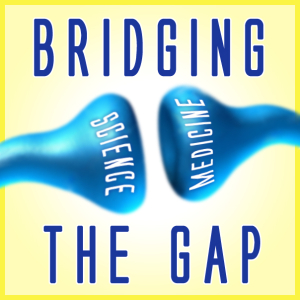Social media pages with titles like “Motivation For Fitness” and “Gym Looks” are becoming increasingly popular, and it’s hard not to notice the explosion of fitness popularity. But even as the diet industry dwindles and our new-found fascination with health hits its stride, it is important to consider the ramifications of these cultural changes. Has this new trend led to the rise of what has been called “excessive exercise” and how much exercise is too much?
Recently, Jenny Craig, Weight Watchers and Lean Cuisine have seen their profits plummet, with sales declining by hundreds of millions of dollars in the past two years. At the same time, fitness apps increased their sales by 62% last year, not to mention the growing number of FitBits on peoples’ wrists. In short, fitness is on the rise, and this rise has also given birth to the term “excessive exercise.”
The definition of “excessive exercise” was explored in a recent study of 3,472 women between the ages of 18 and 42 years, during which they reported their frequency of exercising, as well as their motivation to exercise. The authors considered exercise excessive when postponing it results in intense guilt, or when it is only done to change the weight or shape of the subject. A survey was used to characterize the feelings and behavior of subjects. The criteria were chosen because these responses were most strongly related to a greater risk of eating disorder psychopathology. To put it another way, when exercise and eating disorders are linked, subjects may be moving into the realm of “excessive exercise.”
Although this definition identifies an exercise pattern that could lead to harmful effects, it falls short in describing all potentially harmful fitness behaviors, specifically those that result in injury. Rhabdomyolysis, for example, is the release of muscle cell contents into the blood during high-intensity exercise. It may cause acute kidney injury and, in rare cases, can even be fatal. While uncommon, recent fitness trends that idealize intense exercise have pushed scientists to take a closer look at this condition.
The majority of cases are individuals who are marathon runners, military recruits or body builders, but most recently, scientists have been studying the relationship between rhabdomyolysis and CrossFit. The popularity of CrossFit has exploded in recent years. Its training program involves gymnastics, weightlifting and various endurance activities, often in combination. The workouts are timed and there is a significant aspect of competition that pushes athletes to the physical limit. Undoubtedly, such intensity leads to high levels of fitness, but as they approach the top of the pyramid, there are increasing numbers of people who have fallen off the other side into injury. This not only includes torn ligaments and dislocated shoulders, but more serious injuries as well, such as rhabdomyolysis. Although there are only a small number of formal case reports linking rhabdomyolysis and CrossFit, there is a large volume of anecdotal evidence found within various message boards, blogs and articles.
So what is the motivation behind high intensity exercise despite its potential for harm? In fact, it is not uncommon to describe exercise as “addictive,” and there have been numerous studies demonstrating this effect. One case study used specific, previously defined addiction criteria to assess the addictive potential of exercise in a female subject who was considered to be an “excessive exerciser.” The criteria included salience, tolerance, withdrawal, euphoria, conflict and relapse. Ultimately, this study found that the individual’s experience fulfilled every single criterion. The work of this group and numerous others after the release of this study support the notion that exercise can in fact be considered addictive.
One may argue that, because exercise is typically associated with positive physical and mental outcomes, it is a “positive addiction,” an idea that has been backed by some exercise scientists. However, more recent studies suggest that excessive exercise may, in fact, have detrimental effects on the body. Importantly, excessive exercise does not result in continuous, linear improvements in performance. One group actually found that excessive training led to a decline in soccer kicking performance and capacity for force generation, most likely due to changes at the level of the neuromuscular junction. This suggests that fatigue from high-intensity training may very well impair performance rather than improving it.
Interestingly, another study looked at the relationship between overtraining syndrome and the incidence of upper respiratory tract infections. In overtraining syndrome, athlete performance deteriorates despite regular intense training, and there is a significantly increased incidence of upper respiratory tract infections, indicative of suppressed immune function in overtrained athletes. Authors attribute this change in immune function to an altered cytokine profile caused by the tissue damage and inflammation of overtraining. Essentially, too much exercise has not only has a negative effect on performance, but potentially farther reaching systemic effects, such as a decreased ability to fight off infection.
The cultural shift from diet to health may represent improved lifestyle choices for some people, but may also drive them to harmful extremes. As one of the most highly recommended lifestyle choices by doctors, exercise undoubtedly has positive effects on both physical and mental health; however, the latest trends leading to excessive exercise and possibly exercise addiction represent a potentially harmful extreme. While it is critical for physicians to recommend healthy choices such as regular exercise, it is equally important to be aware of the potential dangers of current health culture trends.



